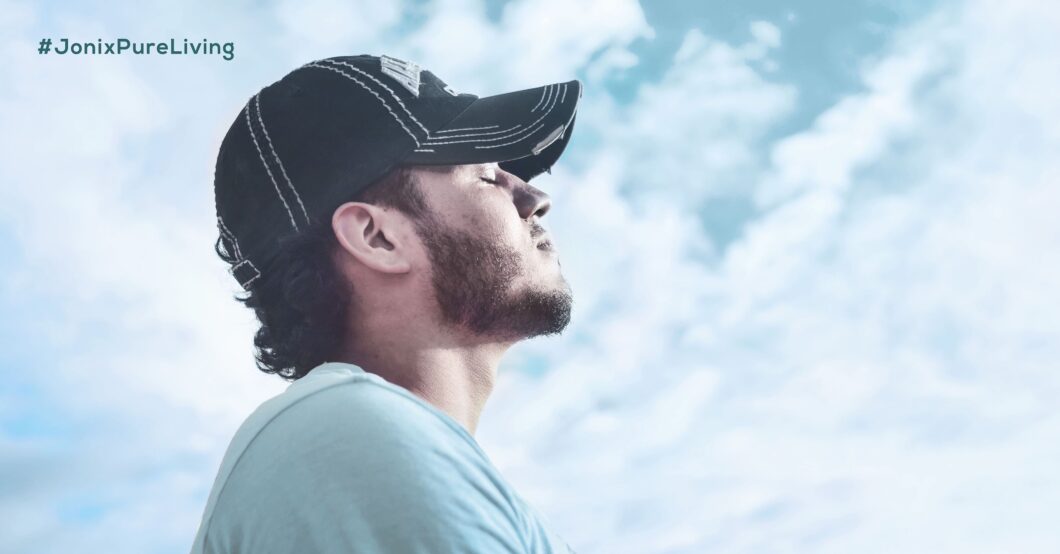Why is breathing so important?
If you think about it, it’s the first and last thing we do in our life, and it is what unites us living beings. Without breathing there is no life! There are many reasons why we have difficulties breathing and taking deep breaths, sometimes feeling heaviness in the chest. This is exactly what we want to talk about today, something that’s not linked to physiological problems or pathologies tough, but to anxiety, stress, tension and fatigue. We will suggest some techniques and exercises that can be helpful, but don’t forget that in cases of prolonged breathing difficulties, it is advisable to contact your doctor.
What you will find in this article:
Difficulty breathing and anxiety
Stress, daily tensions, poor posture or habits can create blockages and stiffness. Without us noticing it, our breathing can gradually become shallower or altered. In stressful situations, for example, we take 15 breaths per minute, while in situations of calm and well-being breaths per minute are 8. Yoga masters have a saying: our breath numbers are limited, so don’t waste them! In fact, what is important is not to breathe a lot but to breathe well, slowly and mainly through the nose.
Anxiety is associated with fear and can lead to behavioral and physiological changes that prepare the person to defend themselves. The brain is predisposed to react to threatening situations with a fight-or-flight response. Your heart rate increases to pump blood to your organs faster, preparing your muscles for action. Thus, breathing becomes more frequent to provide more oxygen to the muscles. The result can be a sense of difficulty in breathing. To regain control, we can implement some practices that help restore balance: the more we practice them, the more we will be able to activate them effectively when needed.
Preparation for exercises
First of all, set up the environment where you will exercise: the temperature must not be too hot or too cold: if it is too cold you may sneeze or feel that your nose is getting too dry, if too hot excessive sweating could distract and make an exercise that is meant to be relaxing tiring. Try to ventilate the room well, maybe turn your Cube on an hour before starting, to guarantee yourself healthy, light air that is good to breathe.
Before starting, we recommend you blowing your nose well, making sure both nostrils are clear. And speaking of nostrils: have you ever noticed that during the day you most likely don’t use both? In fact, we usually breathe mainly from only one (and the other seems to be closed)! In yoga, pranayama breathing serves to balance the breath in both nostrils, which is also supposed to help balance the left and right sides of your brain.
What is the best position for these exercises? For today’s exercises we recommend you choosing the hero position: kneel slowly, then sit on your heels. For better comfort, you can place a pillow under your gluteus. Or you can choose to sit on a hard-backed chair: keep your spine straight, shoulders slightly back, chin straight looking ahead. Do not raise or lower your chin too much as this will close your airways. And now, let’s get started!
Exercise: the breath of the ocean
This first exercise is called ujjayi pranayama, which is victorious breathing, or ocean breathing.
Start by holding your hand open in front of your mouth, with your palm towards you. Imagine it is a mirror and blow at it as if you were to steam it up.
While doing it, try and notice what happens to your throat. Then do the same thing but with your mouth closed, inhaling and exhaling only through the nose. Slowly and deeply. Listen to the sound of your breath – it’s like it came from your throat. And it sounds like the ocean in your head. It’s a marvellous sound, calming and peaceful.
Practice freely a few times. Then inhale counting to six and exhale counting backwards from six to one. As you practice, you can stretch the rhythm, counting to ten as you inhale and from ten backwards as you exhale. There is no rush, take your time, if getting up to six is too much, stop at four. Do not force yourself, just try to accompany your body to this practice. With patience and understanding.
This activity is useful to calm and relax your mind and body, both in difficult moments (at visits you are afraid of, try this at the dentist’s for instance!) and before bed.
Creative breathing exercises
We would like to recommend to you some small breathing exercises that almost sound like games, to relax and have fun, while at the same time creating a moment of calm inside you. You can also try with children if you wish.
Cup of hot chocolate
Imagine you are holding a cup of hot chocolate: hold it in front of your face and take a deep breath through your nose, as if to smell its scent. Then exhale by blowing on it from your mouth to cool it.
The volcano
Hands folded in front of the chest. Breathing in through the nose, bring them slowly over your head, keeping your palms together. Then drop your arms, like lava that flows slowly from the slopes of the volcano to the ground, exhaling.
The snake
Inhale deeply and slowly through the nose, then exhale keeping the mouth slightly ajar, imitating the hiss of a snake, slowly letting the air escape between the lips.
You can try other creative breathing exercises that we have recommended for you here

